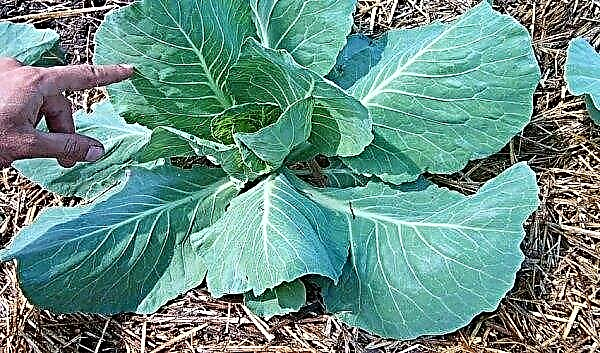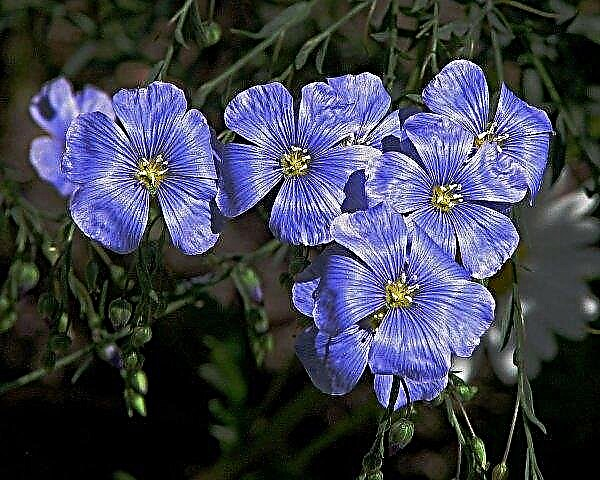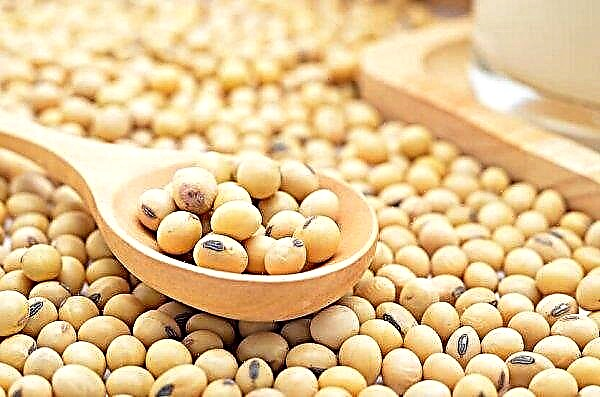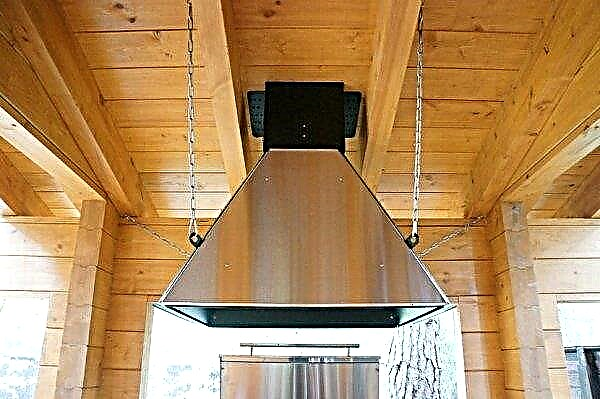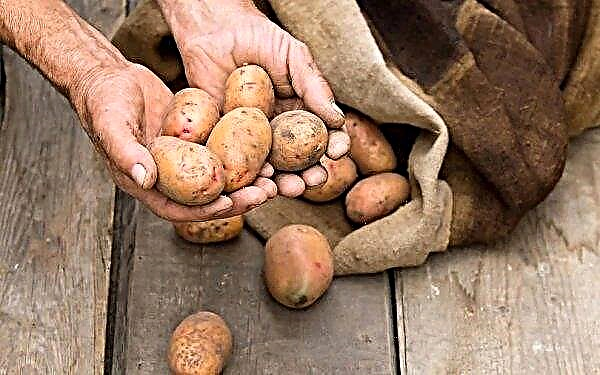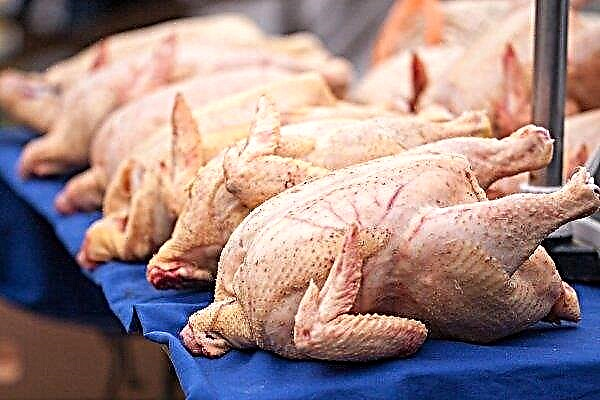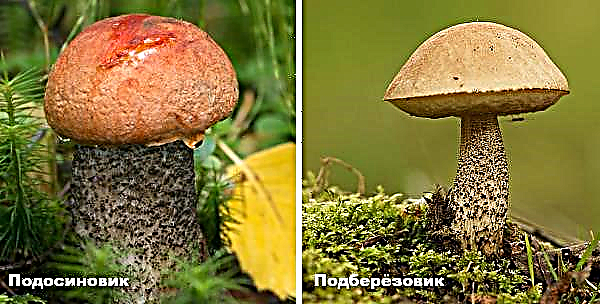For lovers of senpolia there are many interesting offers of the most different sizes and color palettes, but new varieties of violets are still perceived very positively by flower growers. Violet Olesya is just such a plant, because with a low demand for care, it will always please the florist with bright and lush flowers. What you should know about the characteristics of this flower and how to properly organize care for it - this will be discussed in this article.
Botanical description of the plant
Violet Olesya is on the development list of the Russian breeder Konstantin Morev, who over the past 10 years has presented the world with many other varietal variations of the Saintpoly. For example, the mentioned flower is very similar to another variety of the same author - Darling, except that the shades of the flowers are slightly different (in Oles they are much brighter).
Other characteristics of an unusual variety with a female name include the following:
- a beautiful and fairly dense rosette of leaves of a soft green hue (during flowering, it grows very much and almost completely covers the leaf plates);
- amazing purple-pink shade of terry or semi-double flowers with cherry rims along the edges of the petals;
- smooth transition of a pink tint to cream (closer to the center of the sheet);
- easy pubescence on the surface of quilted sheet plates;
- weak aroma and long flowering.
Important! With the age of the plant, the shade of its flowers changes, so do not be surprised that in each subsequent year of growing the flowering will become more magnificent and plentiful.
Flowering plants of the variety can be observed both in summer and in winter, with a break of 2-3 months. Much in this matter depends on the creation of suitable conditions, so in some cases the formation of flowers on a violet practically does not stop.
The conditions for growing violets at home
Despite the low demands in terms of care, each florist should still pay attention to certain features of the cultivation of the Olesya variety. First of all, this concerns a suitable level of lighting, proper placement and the creation of optimal temperature conditions for violets.
Video: Violet varieties Olesya
Placement and lighting
All violets are light-loving crops, however, long exposure to direct sunlight on their leaves can lead to burnout or even burns on the surface. That is why the pot with senpolias should be placed in shaded places, well protected from solar activity at lunchtime. Variety Olesya will feel good on the windowsills of eastern windows, while on the south side, in the summer, you often have to shade the windows with curtains.
In winter, when there is too little natural light, additional light is needed for the abundant flowering of violets. It can be lamps with fluorescent lamps or other lighting elements placed away from the green leaves of the plant (otherwise the leaves and flower petals may get burned).
Did you know? The name of the violet Olesya (Alesia) is consonant with the feminine name, common on the territory of several states at once: Russia, Ukraine and Belarus. In Slavic history, it meant "a girl living in the forest."
Temperature and humidity
Variety Olesya is a representative of heat-loving flowers, therefore, in a room with an adult plant, the temperature values should not fall below + 22 ... + 24 ° C, and when growing young violets, it is desirable to increase these indicators to + 24 ... + 26 ° C. As for suitable air humidity, in the first case, standard room values are enough (about 45-50%), and young children or rooting cuttings can be placed in small greenhouses.
In the summer and during increased air dryness due to the operation of heating devices, it is possible to spray violet leaves from a spray bottle, using only warm and settled water for this. When performing the procedure, try not to wet the flowers of Saintpaulia, because if moisture gets on them, they quickly dry out and crumble. On average, one spraying is sufficient for 7–10 days, for 1–2 months.

Basic care rules
Caring for Olesya's violet consists of a number of standard manipulations - watering, fertilizing, pruning and annual transplanting. Each of these actions has its own characteristics and must be performed in accordance with the requirements of the variety.
Watering
The described plant is afraid of overflow, because often high humidity becomes the main cause of decay of the underground and aboveground parts of the flower. The frequency of liquid application depends on the growing conditions of the ornamental culture, therefore, in order not to be mistaken in this matter, it is advisable to focus on the state of the top soil layer in the pot: if it is dry and when compressed, dust appears in the fingers, then it's time to water the violet, using only settled (preferably filtered water) at room temperature. When watering, a small stream of liquid is sent directly under the root, avoiding moisture entering the flower petals or leaves of a flowering crop.
Top dressing
Top dressing Olesya variety is needed only during the flowering period, active growth and adaptation to new growing conditions, that is, during the first two months after transplantation. It is sometimes recommended to fertilize the flowers even after a massive pest damage or prolonged exposure to sunlight, but in any case, the frequency of these actions should not exceed 1 time in 14 days.
The optimal variant of nutritional compositions will be special, complex nutritional mixtures for decorative flowering plants. Such mineral fertilizers contain a balanced set of micro- and macrocells that are equally needed by all parts of the plant (for example, Kemira-Lux, Stimovit or Mr. Color). Organic fertilizers are often used only when transplanting plants, and in this case, rotted manure or humus diluted in water in a ratio of 1:15 can be used as a nutritional composition. In the latter case, we are talking more about healthy adult plants with a strong root system, since for young crops this method of feeding can be extremely traumatic.
Important! The introduction of any kind of nutrient mixtures is desirable to combine with watering flowers, avoiding the effects of burning fertilizers on the root system and other parts of the violet.
Pruning
Careful and regular pruning in order to form a crown is not required for the Olesya cultivar, but do not ignore the need to remove faded peduncles, damaged or yellowed leaves, and other dried parts of the indoor flower. There is no specific reference to time here, but if possible it is better to postpone the procedure for spring time, simply by plucking off all the unwanted leaves and processes.
To obtain a compact and attractive outlet, it is recommended to remove the lower leaf plates, especially if they look dull and lifeless. True, removing the leaves, you will bare the flower’s trunk, and the older it grows, the more it will stretch on its leg. In order not to reduce the overall decorativeness of the culture, during the next transplant, you can simply sprinkle the bottom of the plant with soil.
After trimming, transfer the flower pot to the usual place of growth and do not forget to periodically turn it to the light source, which will help to form a large and uniform outlet with leaves.

Transfer
The transplantation of most violets is performed annually and is due to a decrease in the nutritional value of the substrate used and an increase in the size of the flower itself. Variety Olesya is no exception, so as soon as you notice the emergence of roots from drainage holes or the deterioration of flowering of Saintpaulia, it's time to remember how long you did not transplant the flower.
The most suitable time for the procedure is the beginning of spring, when the culture has not yet fully awakened from winter dormancy. The new pot should be only a few centimeters larger than the previous one, and a layer of broken brick or expanded clay (sometimes with the addition of charcoal) must be laid on its bottom, which will serve as a good drainage.A suitable substrate for transplanting the plant into a new planting tank should contain peat, activated carbon (no more than 2-3 tablets), a baking powder for soil and moisture-absorbing substances (sold in any flower shops). Alternatively, you can prepare suitable soil from deciduous land, peat and sand in a ratio of 4: 1: 1. To disinfect the finished substrate, use an oven or microwave, where it is calcined at a temperature of at least 150 ° C.
The process of transplanting violets Olesya involves the following sequential steps:
- Put the drainage layer in the prepared pot and fill it with a suitable soil mixture to half.
- After watering the plant well, remove it from the previous planting capacity and place it in the center with a new one, slightly holding it with one hand.
- With your second hand, begin to gradually pour the remaining soil, making sure that it is evenly distributed on all sides of the root system of the flower.
- After adding the substrate just below the branching point of the first leaves, slightly condense and moisten it from the spray gun.
- Take the transplanted plant to its usual place of growth and provide rest for the period of rooting.
Did you know? Violets should not be grown for people associated with vocal activities. There is an opinion that the aroma distinguished by these colors contains substances that can destroy the harmony of the vocal cords, and when you play a song you can’t get high notes anymore.
How to propagate at home
Propagation of violet varieties Olesya can be performed in several ways: by dividing the bush, sowing seeds and rooting cut cuttings. The most successful solution is the last option, but in any case, you should also know about the features of the other two.
Cuttings
Cuttings of violets are most conveniently performed using a cut healthy leaf of a plant, rooted in water or immediately planted in a small container with new nutrient soil. The cut should be done only with a sharp, well-disinfected blade, and it is advisable to dust the remaining attachment point on the donor plant with crushed activated carbon.
If you root the stem in water, then after the first strong roots appear on it, you will need to transplant it into a separate container, which takes a little longer than planting the stem directly into the ground. However, with "water" rooting, it becomes possible to monitor the formation of the rhizome, so by the time you go deep into the soil, you will be sure of its presence. In the case when the cuttings were immediately planted in the prepared substrate, the process of rooting them may take longer, and sometimes the aerial part even seems dead, but until you make sure that there is no rhizome, do not rush to throw out the pot with the plant.
Shiny, medium-sized leaflets taken from the second lower row of violets are perfect for the role of cuttings. In the case of variegated varieties (in particular, Olesya variety), you can cut the greenest leaf, with a high content of chlorophyll, which only contributes to successful rooting.
Dividing the bush
Propagation of violets by dividing the bush is a more time-consuming process, complicated by the possibility of damage to the root system of the flower.
Given this, when performing the procedure, it is important to adhere strictly to all recommendations:
- First, pour the violet well with warm water and prepare everything you need: the plant itself, another pot or several plastic cups if several very small outlets are separated from the mother plant during propagation. Perlite or charcoal can be added to prepared soil, which can increase its friability.
- After the violet completely absorbs the liquid, you can safely remove it from the pot, gently releasing all the roots.
- Now separate the formed sockets from each other without cutting anything (this is easy to do at the points of attachment of individual parts).
- Each received part is planted in a separate pot, placed in the center on a small mound of soil and additionally covered with the remaining substrate.
Important! Do not deepen the separated outlets. It is enough to place them 1-2 cm into the soil so that the lower leaves do not begin to die off quickly (this significantly worsens the appearance of the flower).
After dividing the bush, each part should be attributed to a warm and shaded place where new plants can easily adapt to new conditions. The first watering is carried out not earlier than a few hours after transplantation, and preferably in the pan. When watering through a pot, avoid getting moisture on the leaves of the plant.
Seeds
Unfortunately, it is not possible to purchase seeds of Olesya variety in every store, which becomes the main problem when propagating violets in this way.
If it is still possible to find them, then all further landing operations will be performed according to the general scheme:
- Sift the top layer of the prepared soil and fill the landing tanks with the substrate.
- Immediately before sowing the seeds, spill the substrate with a fungicidal composition and let it dry a little.
- Make small furrows in the soil for the seeds of Saintpaulia, deepening them at a distance of 2 cm from each other (if the plants are not planted in separate pots).
- Fill the seeds with a small layer of soil and moisten the soil with spray water.
- At the end of the planting process, cover the pots (boxes) with glass or plastic wrap and take them out in a warm and dark place. Before the emergence of seedlings, you can not leave containers on well-lit window sills.
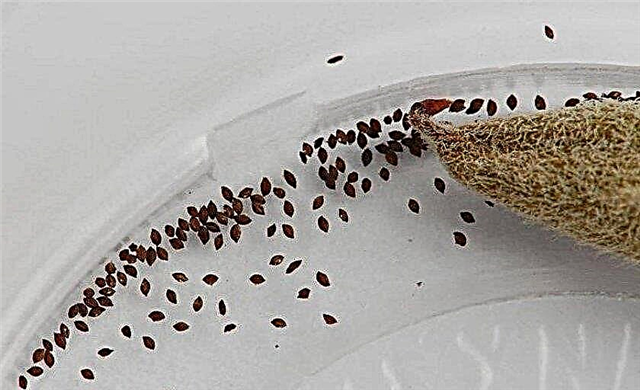
Possible growing difficulties
All the difficulties in growing the Olesya cultivar are associated with the activity of pests and the spread of diseases of indoor plants both on young seedlings and on adult violets.
Typical ailments in this case will be late blight, bacteriosis, powdery mildew (real and false), root and stem rotand the most effective means in the fight against them will be special fungicidal formulations, the most popular of which are Fundazol, Topaz, Fitosporin-M, Bactofit. In addition, all affected parts of the plant must be removed immediately, limiting their contact with healthy indoor flowers. For prevention purposes, you can additionally treat other plants with the indicated formulations, without forgetting the importance of agrotechnical measures.
Among pests, increased activity on violets always differ aphids, ticks, thrips, scutes and larvae of different butterflieswho actively drink juice from the leaves of the culture. In the fight against them, such compounds as Apollo, Fitoverm, Neoron, Actellik, as well as some folk recipes are actively used: for example, treatment with a soap solution will help to relieve plant leaves from aphids. Preventive measures are based on a regular examination of all violets, timely isolation of damaged specimens and proper treatment of flowers with appropriate preparations.
It cannot be said that difficulties in growing Olesya's violets do not arise, but at the same time it is no more difficult to deal with them than in growing other ornamental plants. With a little effort, you will definitely get bright and attractive terry flowers, pleasing to the eye with their large sizes.


